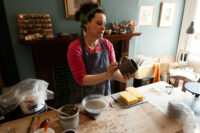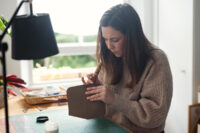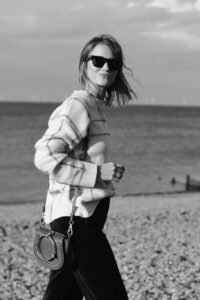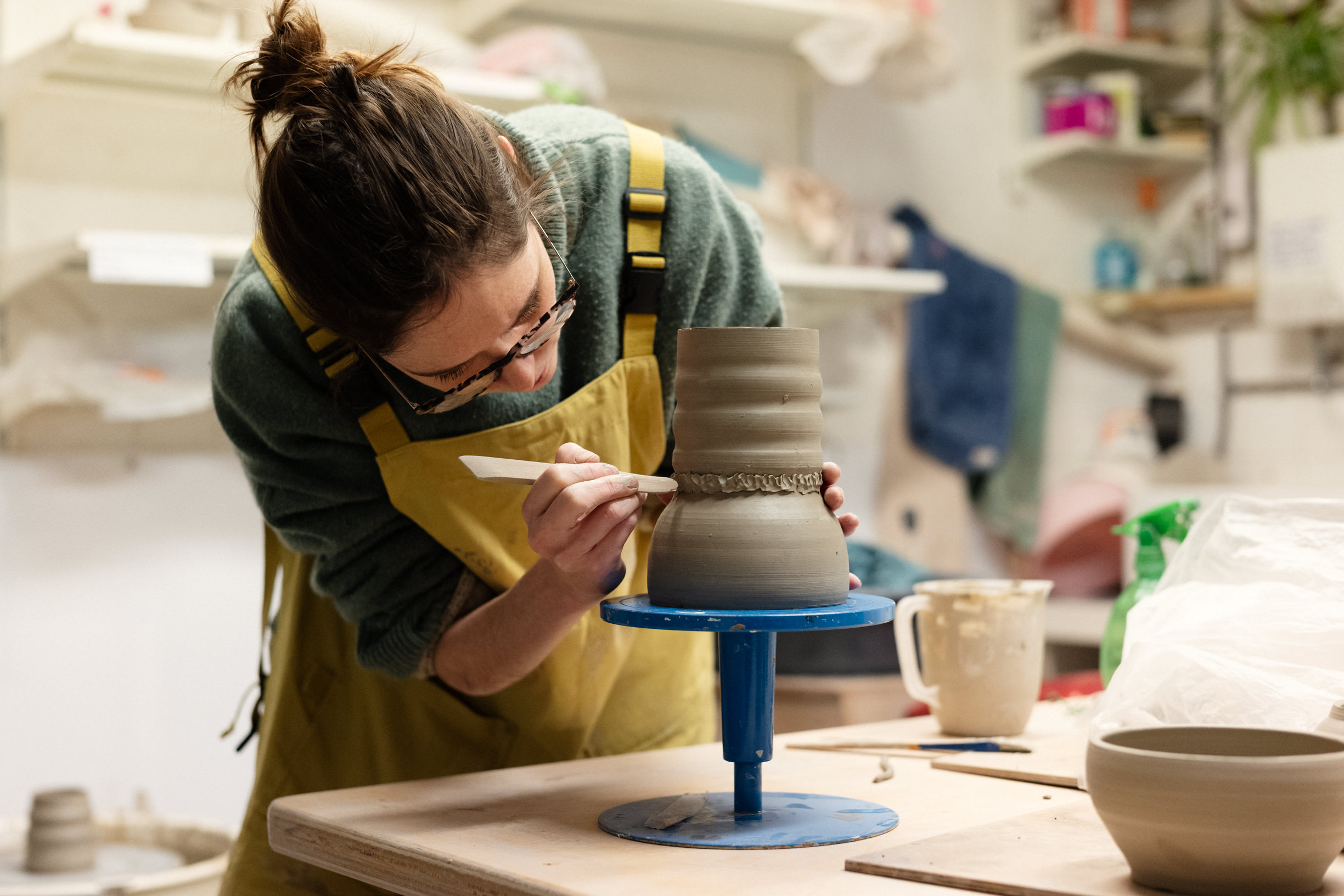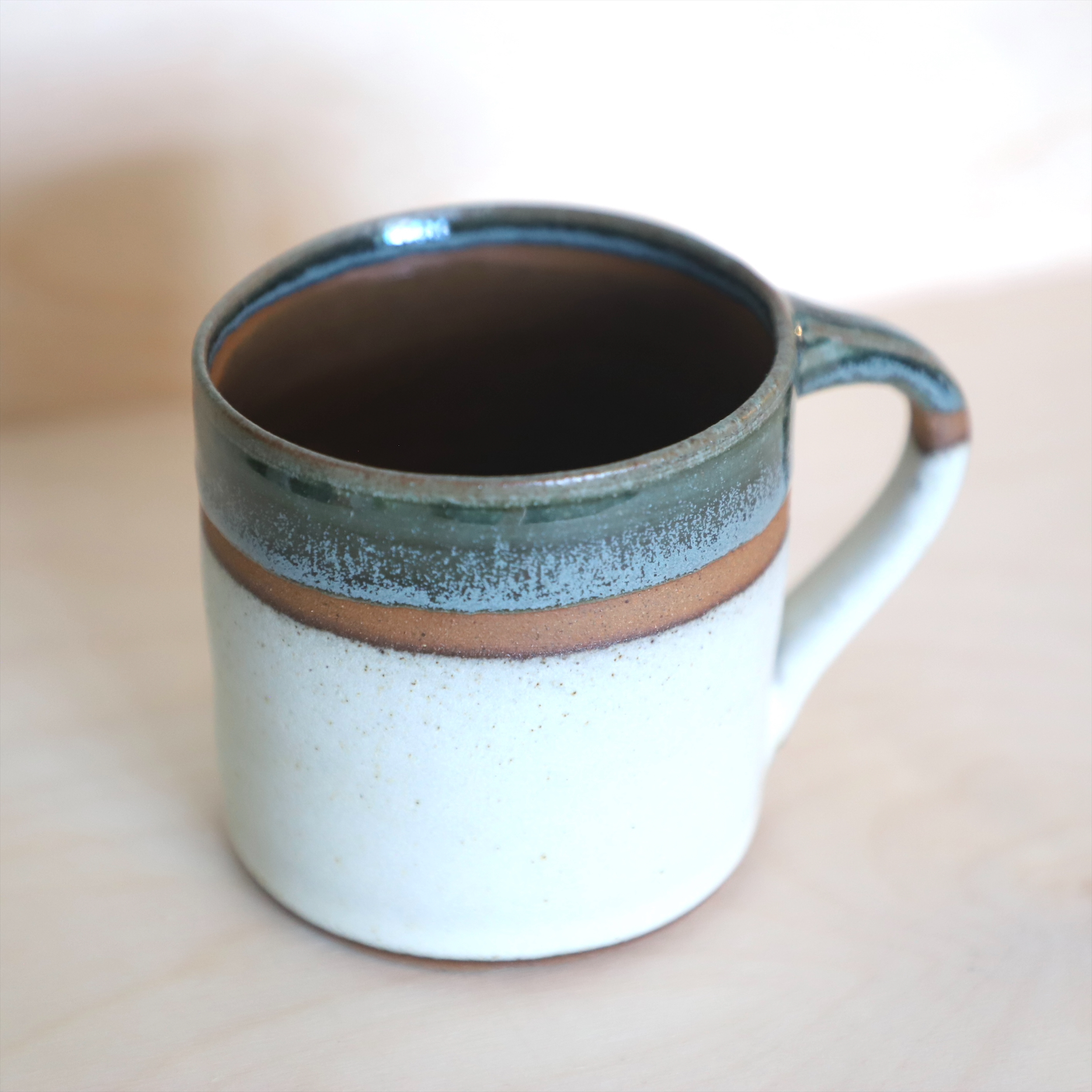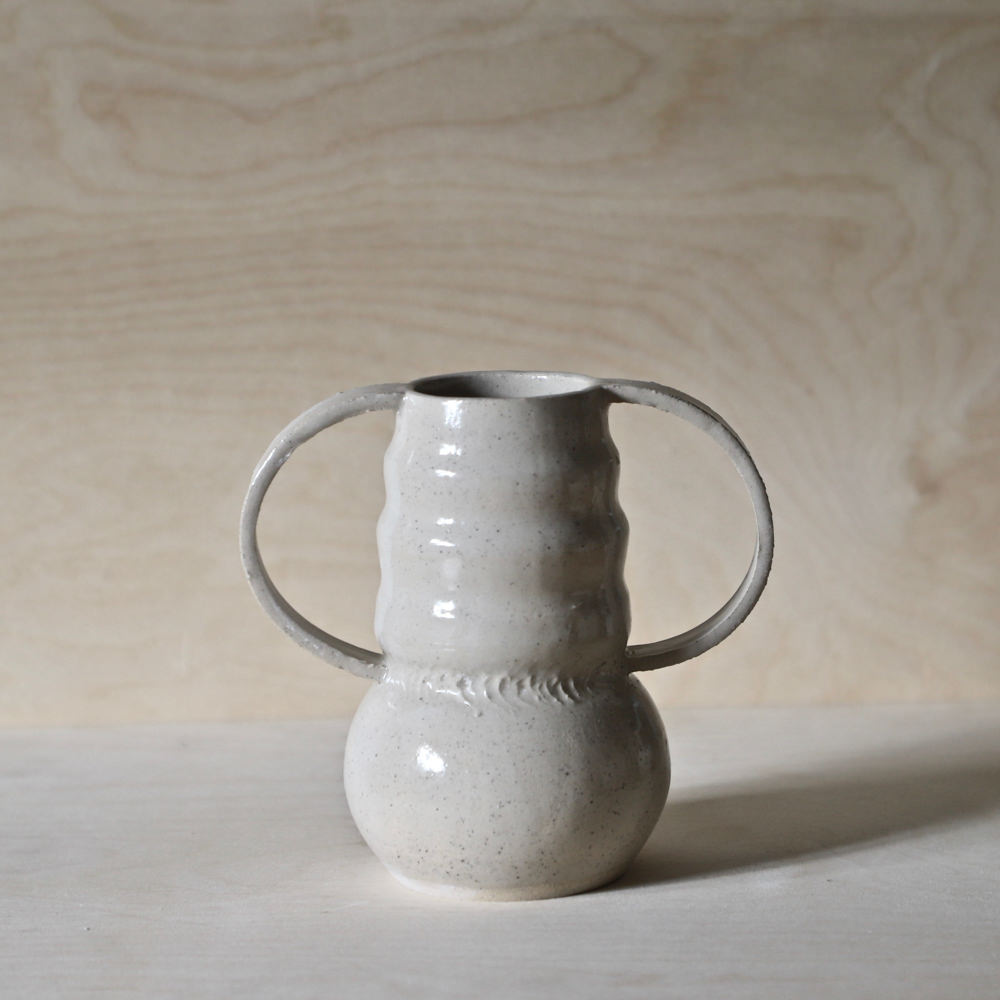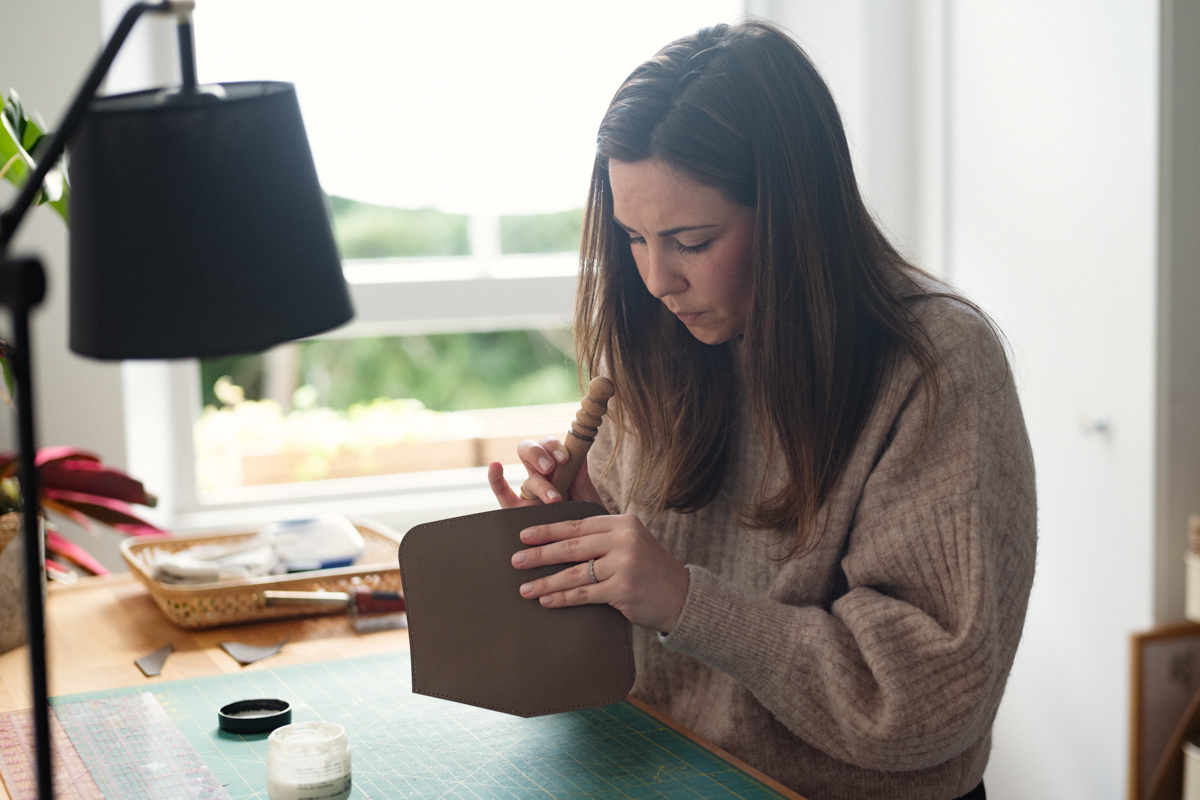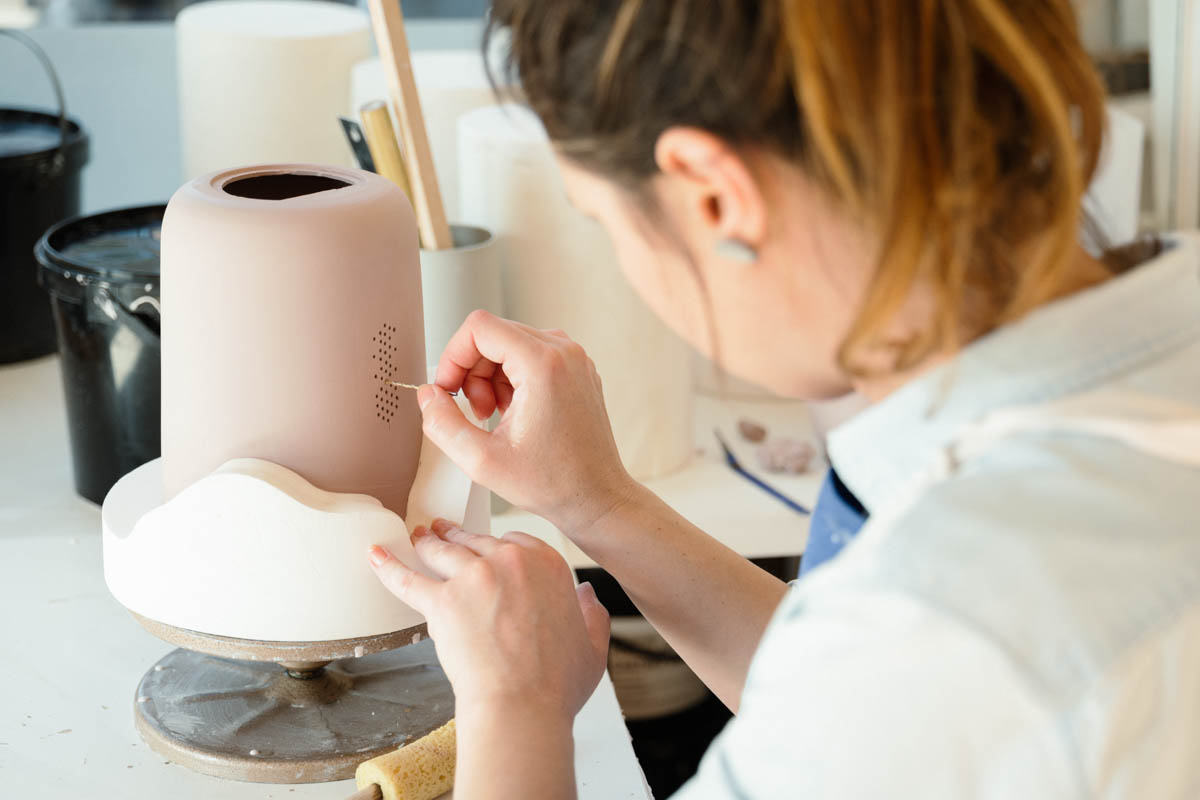Today, we bring you an intimate conversation with Hania Stella-Sawicka, a ceramist who masterfully blends function with artistic expression. From the first encounter with clay at a local adult learning centre to the creation of one-of-a-kind pieces, Hania navigates the intricate dance between utility and art. Join us as we delve into their creative process, exploring how teaching influences their work, the philosophy behind their aesthetic choices, and the raw emotional connection they share with their medium. Scroll down to embark on a truly inspiring journey into the tactile and transformative world of ceramics.
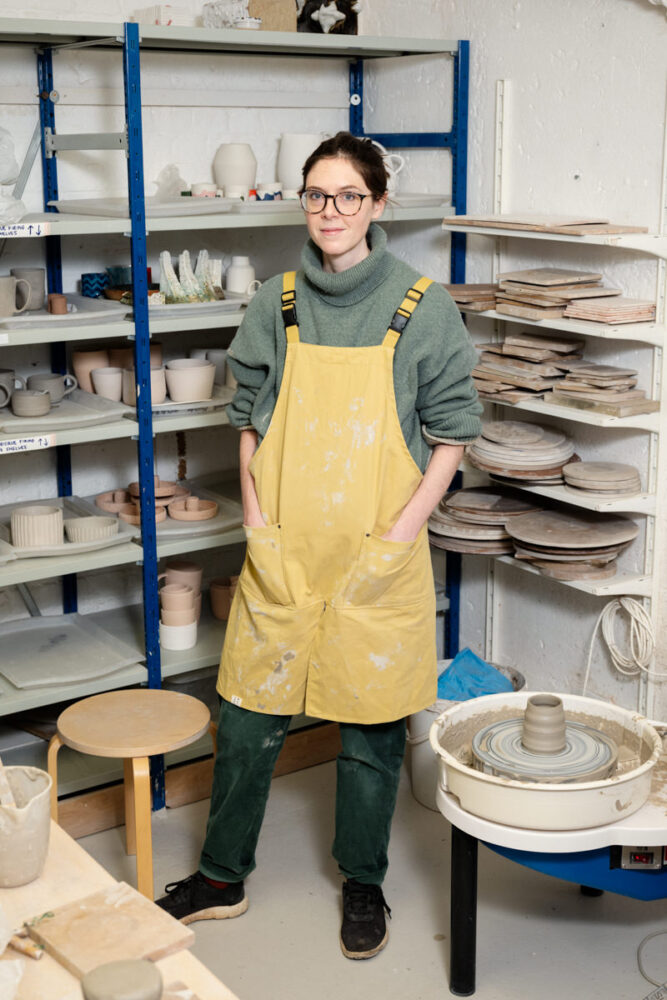
Hania Stella-Sawicka
Over ten years ago I signed up for evening ceramic classes in the local adult learning centre. The alchemy of glaze and clay and the anticipation of seeing what would come out of the kiln were something new and refreshing to an artist working with found materials and otherwise trying to exert a lot of control over finished work.
I spent a lot of time as a student of contemporary art thinking about the aesthetics of both function and gesture, in fact I made several sets of decorative ‘tools’ which encapsulated this tension. So perhaps that’s another reason I enjoy making with clay as it contextually holds both possibilities.
When it occurred to me that the handles should be similarly constructed from thrown elements to give a sense of uniformity to the object, and so they contained a continuity of process. I’m working towards the spontaneity and fun of making these being more evident in the end result perhaps bringing them a step closer to the sculptural pieces.
My other life is as a sixth form art teacher and I find the students creativity the biggest motivator to get to the studio. I’m always telling them to take risks and draw, and it reminds me of a need to do both in my own practice. Being in a shared studio space is also inspiring as you see objects in different stages of development and people trying new things out all the time.
It’s very important that these are not made from observation but from an embodied memory of muscle and limb. From life drawing, to exercise classes, to just being in the world, we know inherently the way our bodies exist and move so I try to tap into that knowledge. The figures are made very quickly as I feel they achieve a sense of movement and a trace of my body making them more readily that way.
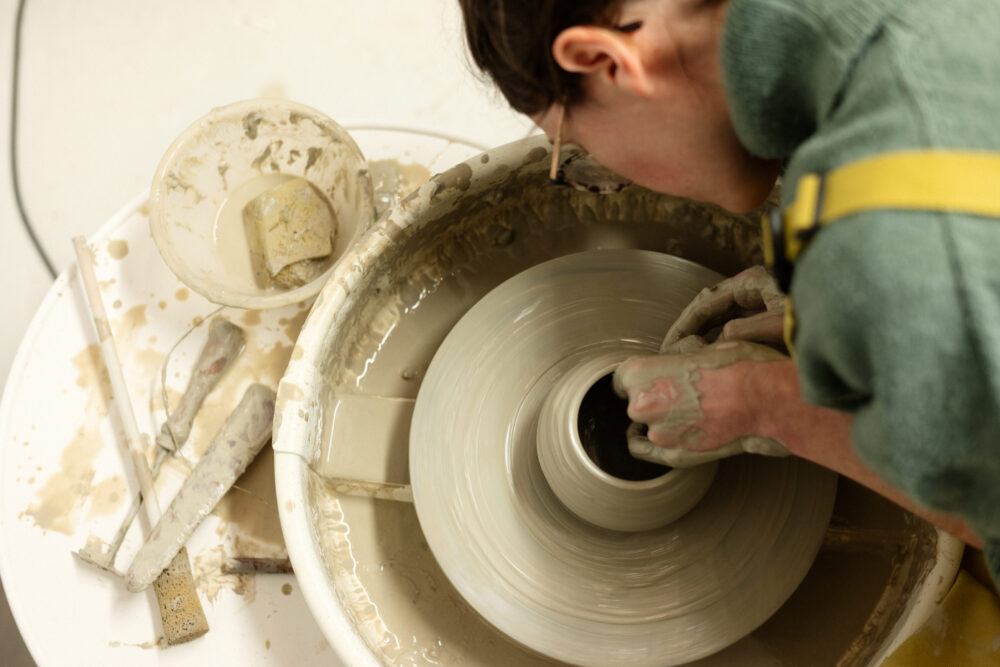
I’d love to say this was the case but it’s definitely an aesthetic development born of simply having to be economical with studio space! I am definitely drawn however to ceramic objects which demonstrate the collaboration between the artists hand and the unpredictable qualities of clay and which remind us of its origins as natural substance. It’s probably rooted in the sculptural discussion of truth to materials.
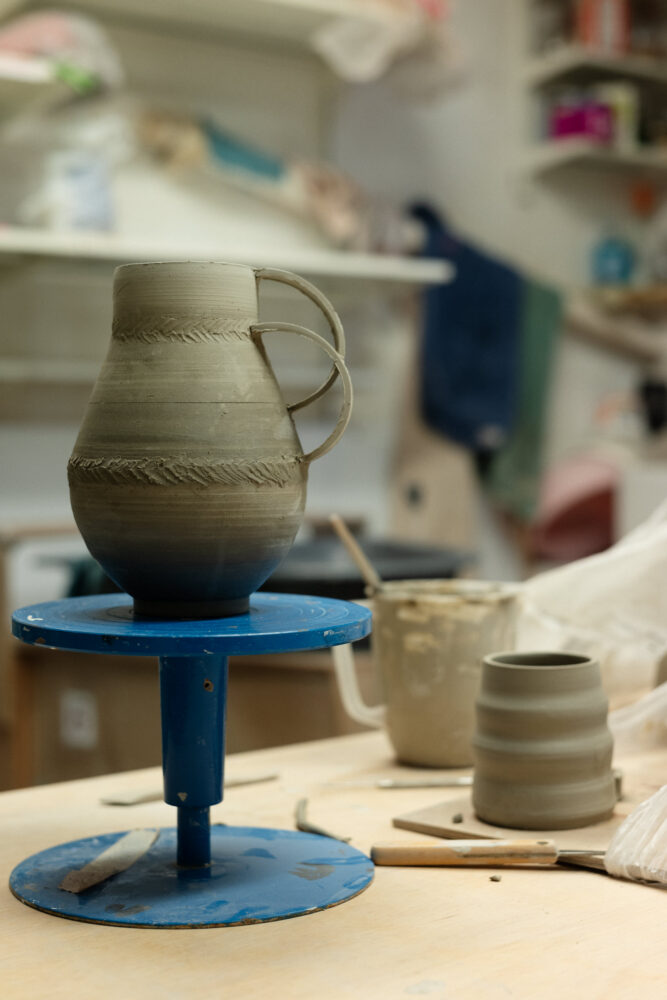
Apart from a couple of short courses, I’m largely self taught on the wheel and so probably do a lot of technical things incorrectly. In a way though I like the creativity involved in problem solving, in working things out yourself and finding your own systems and processes perhaps letting these things lead design too. A good example are the ‘Winter’ candle holders I made which served a function and have to be carefully measured allowing for shrinkage to fit a standard candle and then using them as an experimental surface to pour a combination of glaze and oxides on to see what might happen. I also tend to make a lot of one off pieces which allow me not to be too precious about the particulars of scale and surface.
The rhythm of ceramics means there is always something to do from photographing finished pieces to recycling clay, so if I’m not feeling creative I can busy myself with something more routine which is often motivating in itself. Living in London I spend a lot of time in art galleries for inspiration both for my teaching and making. Aneta Regel at Sarah Myerscough Gallery was a beautiful show this year and most recently I enjoyed the ecological drives behind Tomas Saraceno’s exhibition at the Serpentine Gallery where he collaborates with Cameroonian spider diviners and the spiders themselves! I also enjoy monoprinting as another medium full of textures and unpredictability that can help me work intuitively to come up with new forms and shapes.
There are no doubt formal relationships between some of my work post RCA and what I’m doing now but the ceramics have a different place in the world with a different set of purposes and drives. I’ve settled on ceramics as a complementary practice to teaching art, at work I think with my head and am around a lot of discussion and ideas, while in the studio I get to think with my hands. It’s a slower and quieter way of working which is hugely therapeutic.
That said I have always been concerned by how our bodies exist in relation to objects and the designed world, and in using clay I have found the most tactile and haptic medium to explore those ideas.


